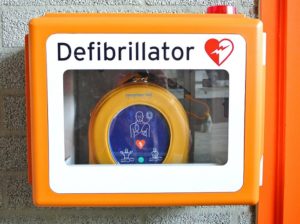 Survival from cardiac arrest doubled when a bystander stepped in to apply an automated external defibrillator (AED) before emergency responders arrived, according to new research published in the journal Circulation.
Survival from cardiac arrest doubled when a bystander stepped in to apply an automated external defibrillator (AED) before emergency responders arrived, according to new research published in the journal Circulation.
Researcher looked at 49,555 cardiac arrests across the USA and Canada that did not happen in hospitals. They used these patients to form a sub group of those that took place in public and were witnessed and shockable. When patients had a shock delivered by a bystander 66% survived to hospital discharge, emphasising that bystanders make a critical difference in providing emergency care before emergency responders arrive.
Of the witnessed and shockable cases, AEDs were used by bystanders in 18.8% of cases. Patients that received a shock from a public AED had a higher chance of survival than those that did not (66.5% vs 43%). Patients that received an AED shock from a bystander (57.1%) using a publically available device instead of having to wait for emergency responders (32.7%) had near normal function and better outcomes. Without a bystander intervention using an AED 70% of cardiac arrest patients either died or survived with impaired brain function.
Based on the study findings, senior study author Myron Weisfeldt (Johns Hopkins School of Medicine, Baltimore, USA), and his team, would like to see greater distribution of AEDs, including equipping police with defibrillators, especially in regions where it takes emergency responders long to get to the patient
“Bystanders have the potential to save a life,” Weisfeldt said. “This should be a great incentive for public health officials and bystanders to strive to have AEDs used on all victims of cardiac arrest.”
Michael Kurz, chair of the American Heart Association’s Systems of Care Subcommittee and associate professor at the University of Alabama School of Medicine in the Department of Emergency Medicine (Birmingham, Alabama, USA) added, “First aid, CPR and AED training need to become part of a larger culture of safety within workplaces. We are certainly seeing higher public interest in this training, and our campaign calls upon decision makers in workplaces and popular public spaces such as arenas, fitness centres, hotels, and churches to place AEDs in the same locations as a fire extinguisher.”













Well this is awesome post and written very well. Your point of view is very good.